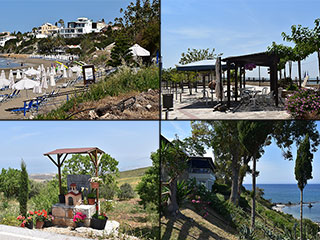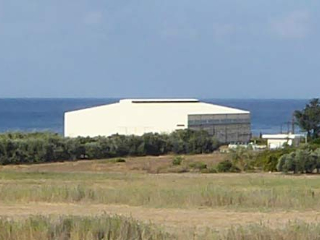The History of Paphos in 16 Pictures
The Glory of Christianity
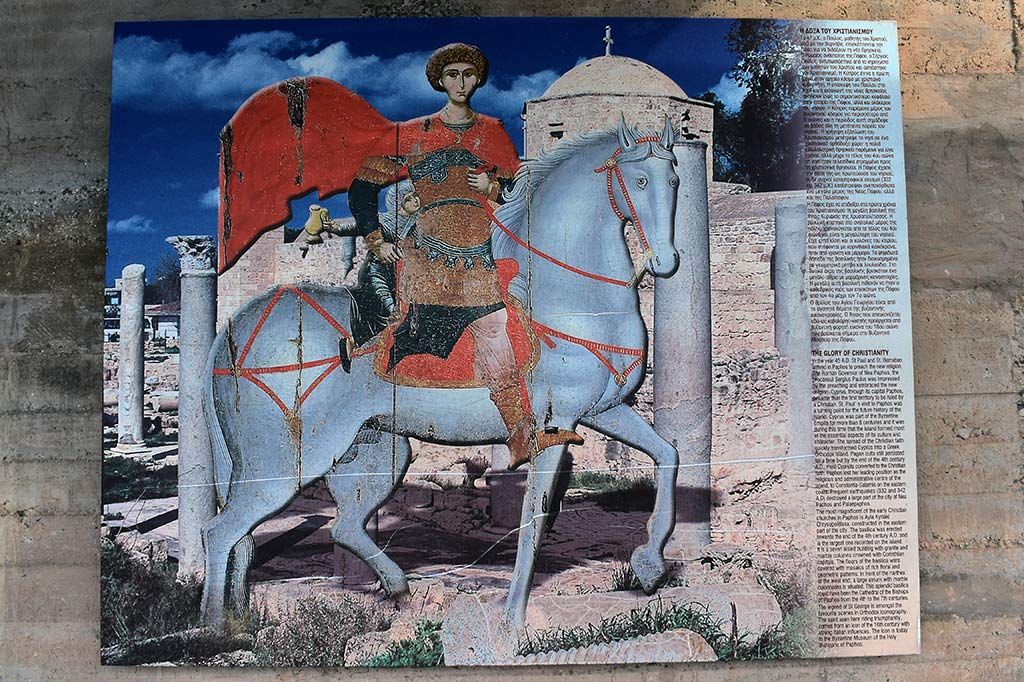
In the year 45AD St Paul and St Barnabas arrived in Paphos to preach the new religion. The Roman Governor of Nea Paphos, the proconsul Sergius Paulus was impressed by the preaching and embraced the new religion. Cyprus, through its capital Paphos, became thus the first territory to be ruled by a Christian. St Paul's visit to Paphos was a turning point for the future history of the Island. Cyprus was part of the Byzantine Empire for more than 8 centuries and it was during this time that the island formed most of the essential aspects of its culture and character. The spread of the Christian faith quickly transformed Cyprus into a Greek Orthodox island. Pagan cults still persisted for a time but by the end of the 4th century AD most Cypriots converted to the Christian faith. Paphos lost her leading position as the religious and administrative centre of the island, to Constantia-Salamis on the eastern coast. frequent earthquakes (332 and 342 AD) destroyed a large part of the city of Nea Paphos and Palaepaphos.
The most magnificent of the early Christian churches in Paphos is Ayia Kyriaki Chrysoppolitissa, constructed in the eastern part of the city. The basilca was erected towards the end of the 4th century AD and is the largest one recorded on the island. It is a seven aisled building with granite and marble columns crowned with Corinthian capitals. The floors of the basilica were covered with mosaics of rich floral and geometric patterns. In front of the narthex at the west end, a large atrium with marble colonnades is situated. This splendid basilica must have been the Cathedral of the Bishops of Paphos from the 4th to the 7th centuries.
The legend of St George is amongst the fgavourite scens in Orthodox iconography. The saint seen here riding triumphantly, comes from an icon of the 16th century with strong Italian influences. the icon is today in the Byzantine Museum of the Holy Bishopric of Paphos.

The Holy Virgin
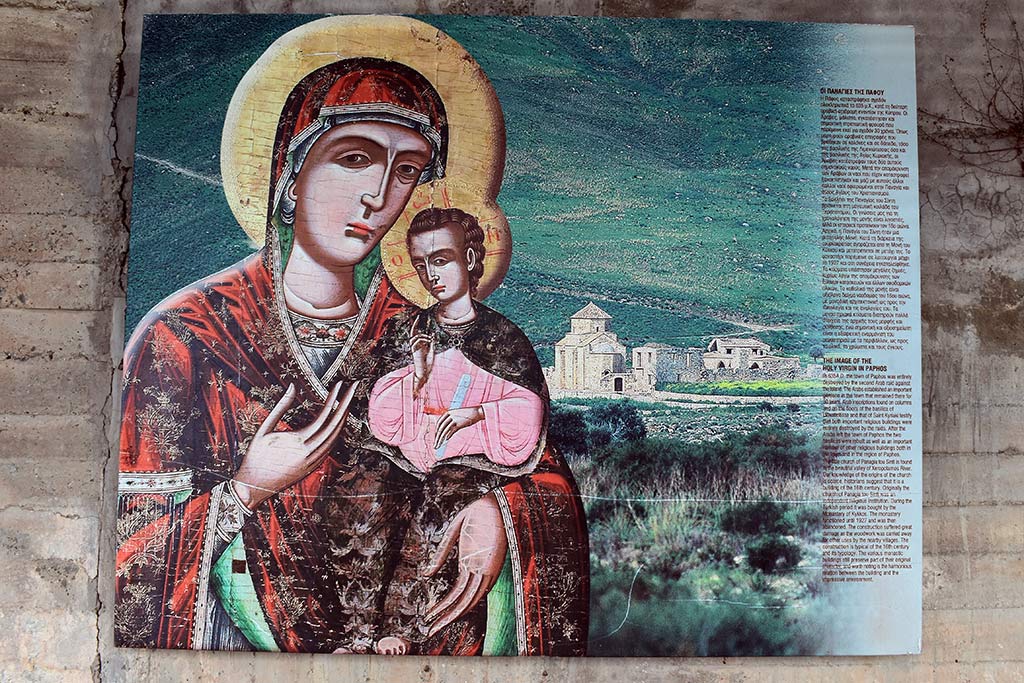
The Image of the Holy Virgin in Paphos
In 635AD the town of Paphos was entirely destroyed by the second Arab raid against the island. The Arabs established and important garrison in the town that remained there for 30 years. Arab inscriptions found on columns and on the floors of the basilica of Limeniotissa and that of Saint Kyriaki testify that both important religious buildings were entirely destroyed by the raids. After the Arabs left the town of Paphos the two basilicas were rebuilt as well as an important number of other religious buildings both in the town and in the region of Paphos.
The little church of Panagia tou Sinti is found in the beautiful valley of Xeropotamos River. Out knowledge of the origins of the church is scarce, historians suggest that it is a building of the 16th centurey. Originally the church of Panagia tou Sinti was an independent religious instisution. During the TUrkish perion it was bought bt the Monastery of Kykkos. The monastery functioned until 1927 and was then abandoned. the construction suffered great damage as the woodwork was carried away for other uses by the nearby villages. the construction is typical of the 16th century and its typology. the various monastic buildings still preserve part of the original character, and worth noting is the harmonious relation between the building and the impressive environment.
Saints Neophytos
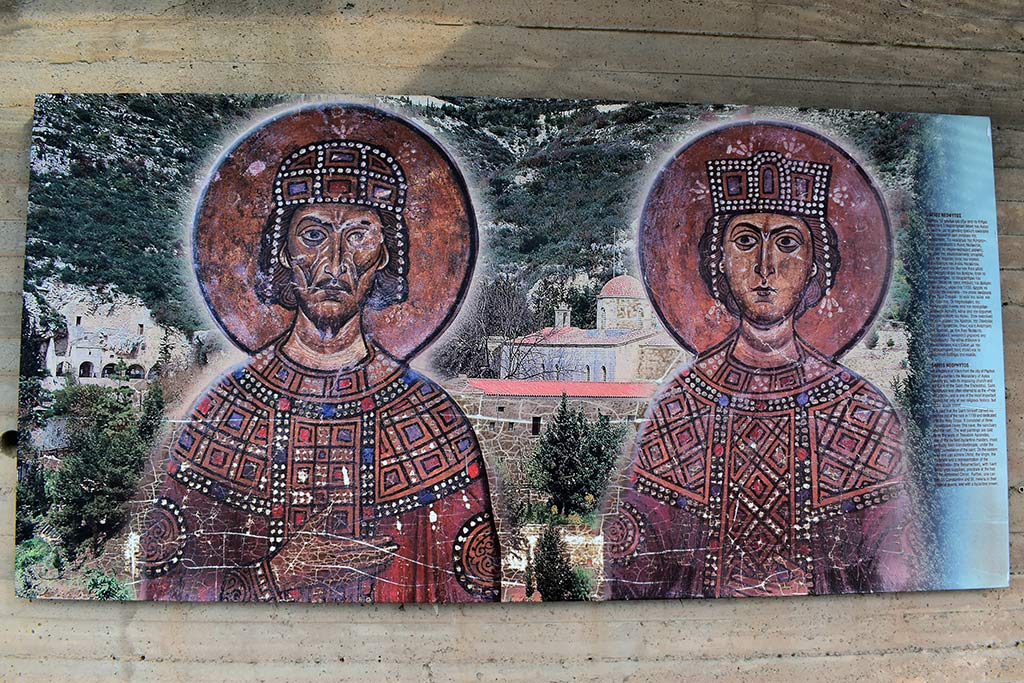
At a distance of 10km from the city of Paphos one encounters the Monastery of Ayios Neophytos, with its imposing church and the Cave of the Saint (the Encleistra). Saint Neophytos was often referred to as the "Pride of Cyprus", and is one of the most important figures not only of our religious history, but of the whole island.
It is said that the Saint himself carved his recluse of out the rock in 1159 and dedicated it to the Holy Cross. It consisted of three consecutive caves (the nave, the sanctuary and the cell). The wall paintings are said to be the work of Theodore Apsevdes, one of the earliest byzantine masters, most probably from Constantinople, under the strict surveillance of the saint. On the eastern wall one can admire Christ, the Virgin, the Prophets and a representation of the "Anastasis" (the Resurrection(), with Saint Neophytos suppliant, prostrate at the feet of the enthroned Christ. Further, one can see St Constantine and St Helena in the imperial gowns, and with a byzantine crown.
Medieval Times

The MediEval Period 1192 - 1570
Richard the Lion Heart, king of England took over the island after a battle with the last Byzantine prince of Cyprus. He then sold the island to the Knights templar, who in turn sold it in 1192 to Guy de Lusignan, sovereign of the Crusader Kingdom of Jerusalem. A Frankish ruling class settled, divided the island in provinces and ruled according to their feudal system. Nea Paphos and its harbour still remained the main port of western Cyprus but never acquired the importance of the coastal cities of the east. The French settled in the Palaepaphos area in the proximity of the temple of Aphrodite. They established in the Chateau de Couvoucle their administrative centre. Only the eastern and northern part of the building remain today. Pilgrims mention Palaepaphos under the name of Kouklia as a rich area in sugar plantations and we know that a substantial income of the Frankish kingdom came from the sugar plantations, the refining and the export of sugar. There is no doubt that Paphos had seen more prosperous times than the 15th and the 16th centuries and if ones is to judge by the descriptions of travellers, Paphos gave a sad impression of ruin and destruction.
A Renaissance sculpture of an angel from the Franciscan church of Paphos (today in the Paphos District Museum) is seen here in the Gothic Hall of the Royal Manor of Palaepaphos.
Ottoman Rule
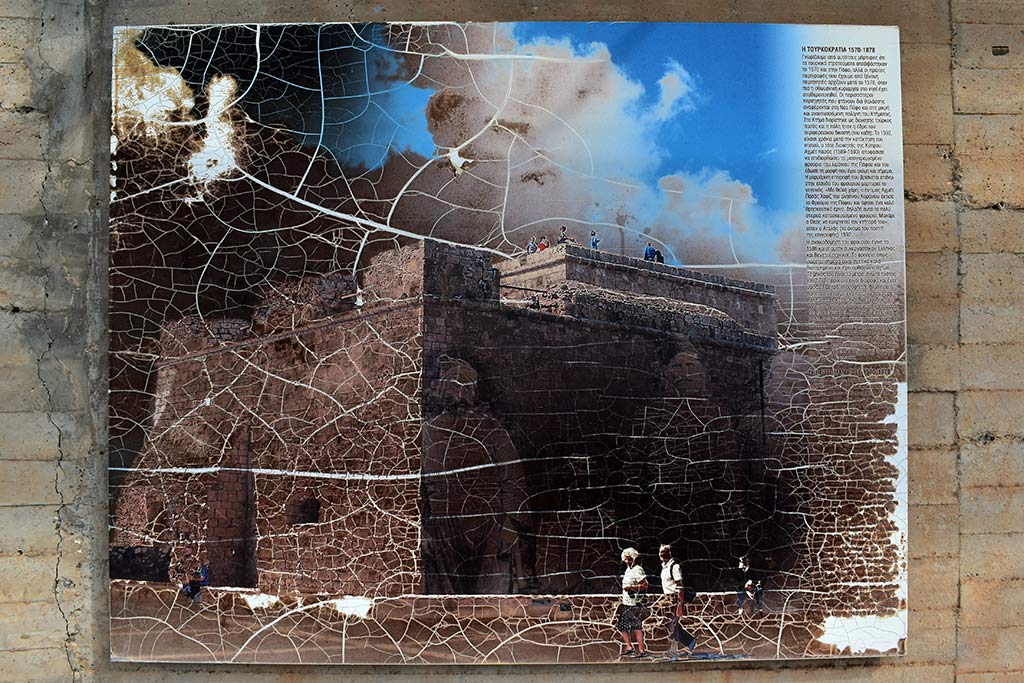
The Ottoman Rule 1570 - 1878
Travellers describe how the Turkish troops disembarked in 1570 in Paphos, but the first real descriptions of the condition of the city begin after 1576 when the Ottoman rule was established on the island. Most travellers arrive by boat, and refer to Paphos and to the village of Ktima. A governor was appointed for Ktima and the town was under the jurisdiction of the kadi (the Turkish judge). In 1592, twenty years after the occupations of the island, the Governor of Cyprus, Ahmet Pasha (1589 - 1598) decided to restore the castle in the port of Paphos that was practically destroyed. A marble inscription found on the upper side of the entrance to the castle reads as follows: "With the grace of God the honourable Ahmet Pasha Hafiz, worshipper of the real Koran, built the castle of Paphos, leaving thus a good religious deed, that is this very strong fort. May God bless the proprietor of this building" wrote the poet Atali in 1592.
The rebuilding of the castle took place in 1586 and both Greek and Venetian architects worked together. The building is a well preserved fortress of square shape and measures 83 metres in length, and 17 metres wide. The fortress has two storeys and its height reaches 21 metres. The first floor is protected by a stone wall whereas the entrance is situated on the eastern side and communicates with the shore through a stone pasaage. Descriptions talk of a small tower on the southern part of the fortress, that served probably as a light house. Nothing remains of this small tower. The upper floor consisted of three rooms that housed the guards.
Page 3 of 4


Related Blogs:
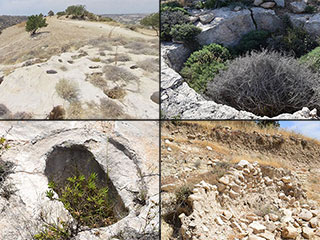
Souskiou Cemetery
Last spring we blogged about our visit to the abandoned village of Souskiou in the Diarizos Valley. We received numerous comments, some of which alluded to an ancient cemetery that lurked in the nearby hills. Well, this naturally piqued our curiosity, and we resolved to track them down. Over the next few months we made numerous excursions, and this is a summary of what we found...
Ancient Lemba
Yesterday a news headline caught my eye: "An ancient Chalcolithic settlement site in Lemba in Paphos urgently requires maintenance, according to the local community leader". We had visited this site before, so I thought I should revisit it to see just how urgent the maintenance was...
The Ancient Sugar Factory At Kouklia
As you drive along the A6 from Paphos to Limassol, you will pass the Asprokemmos Dam on your left. Just after that you will see some old ruins. This is the site of an ancient sugar factory.
Sinti Monastery
It's time for another guest blog, and this time Max has taken a break from his minerals to show us somewhere a bit more spiritual. Over to you Max... Sinti Monastery is a very important ancient monument and not far away from Paphos, in the beautiful Xeros River Valley. I thought I would take a round trip. In order that people can visit the place all year round (even after a good Winter's rain) in a normal car I took the longer route over the hills where the roads nowadays are all properly surfaced. On the way back you can either take the same road (Winter) or use the short cut along the Xeros river bed which is only 8 km until the next village Nata.Good Pages To Visit
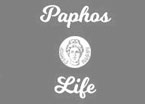
FB PagePaphos Life on Facebook
Like us on Facebook and stay notified of new blog posts.

FB PageOur Facebook Chat Group
Paphos Chat has been created for people who like our site and want to chat using Facebook. You can also easily upload photos of any size here. A lot of people are members of the Facebook chat group and the main forum. It's entirely up to you.
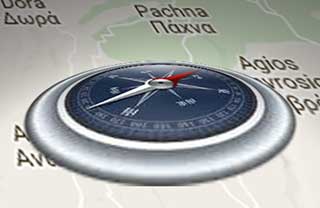
ListBlog Locations
Planning a day out? Then use our map of blog locations as a handy guide. Some of the places we visit our closer to each other than you might think, so take a look and start planning your next adventure...
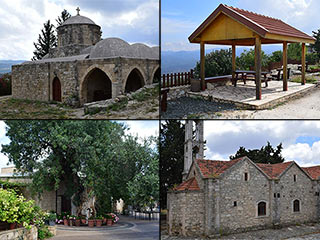
eBookCyprus Road Trip 01: the Kathikas - Panagia Loop
Let me take you on a journey around the region of Paphos, Cyprus. Starting at Paphos itself, we travel to Akoursos, then Kathikas, Kritou Terra and Simou. We continue past Lasa and Kannaviou, before taking in the delights of Panagia. Getting a bit more adventurous, we visit the abandoned villages of Statos and Agios Fotios, before passing through Choulou, Letymbou and Polemi, and rejoining the main Paphos - Polis road.
The route is suitable for all types of vehicle, and requires no off-roading. The guide contains about 130 photographs including shots of all the road signs you need to pay attention to, as well as some of the highlights you may experience along the way.
There are also several maps which will help you keep your bearings.
You can do this journey in a day, or you can break it up into chunks. You can also do it in reverse, to get some completely different views. It is entirely up to you.
